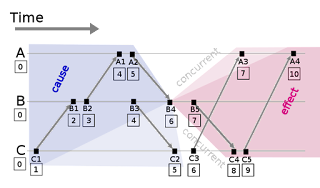I wouldn't call mob programming a methodology, but rather a practice that can be adopted. Like methodologies, however, it only surfaces problems and questions faster rather than providing solutions.
For example, a team might have a low bus factor due to the specialisms of its members, and only one person might be used to edit code in a certain language or application. Other team members might have gaps, such as not being set up with the tools and credentials to work on infrastructure and operations; or lacking the knowledge to perform screen reader testing for accessibility.
Besides exposing bus factors and gaps, mob programming brings design conflicts and opinions into the open. It takes little effort to turn the other way when looking at a pull request, or to switch to busy work or generic "refuctoring" when alone; disagreements and questions about value can often prop up under your nose inside a mob session.
However, that doesn't mean that the practice automatically gives the team the psychological safety to talk about those issues out loud, and to resolve them. That's like asking an hammer to walk to the shop and buy the right nails.
At the last part of this post, I thought I'd compare my mob programming experience with some of the theory; the theory being famous Agile software development methodologies and their values or principles.
 |
| The serene predictability of waterfall software development |
Within Extreme Programming values:
- Communication inside a mob is very high: synchronous conversations supported by a visual medium such as code or a digital whiteboard.
- Simplicity is fostered by people in a diverse team reminding others that You Aren't Gonna Need It, but also needing to understand what's going on at all times.
- Feedback from the rest of the team, or even from a customer proxy, is immediate.
- Courage is needed to be a driver in an unfamiliar setting, or even a navigator asking the mob for help on a task we are uncomfortable with.
- Respect is necessary to work face to face for prolonged periods of time.
Within Lean values, mob programming:
- eliminates waste such as partially done work: there should ideally be no pull request open or branch, as code is produced and integrated in the mob continuously;
- eliminates waste such as outdated features or gold plating: when you include a product owner in the mob, it's easy to steer and change the scope upon feedback rather than plowing on with the original idea;
- eliminates waste such as handoffs: there is no packaging up of code for review, or of pixel-perfect Photoshop design to front end developers, or front end requests to back ends to be implemented, and so on.
- reduces task switching: since everyone that is needed for progress is present, you often don't need to switch task because of waiting on someone, but can just carry on.
- amplifies learning: ideas are tried out in code from the get go, and most of the team can learn from the results including the product owner.
- optimizes the whole: most of all, we are not optimizing how much we can use everyone's time, but how fast we can flow a single piece from idea to customer value.
Image by Yann.


